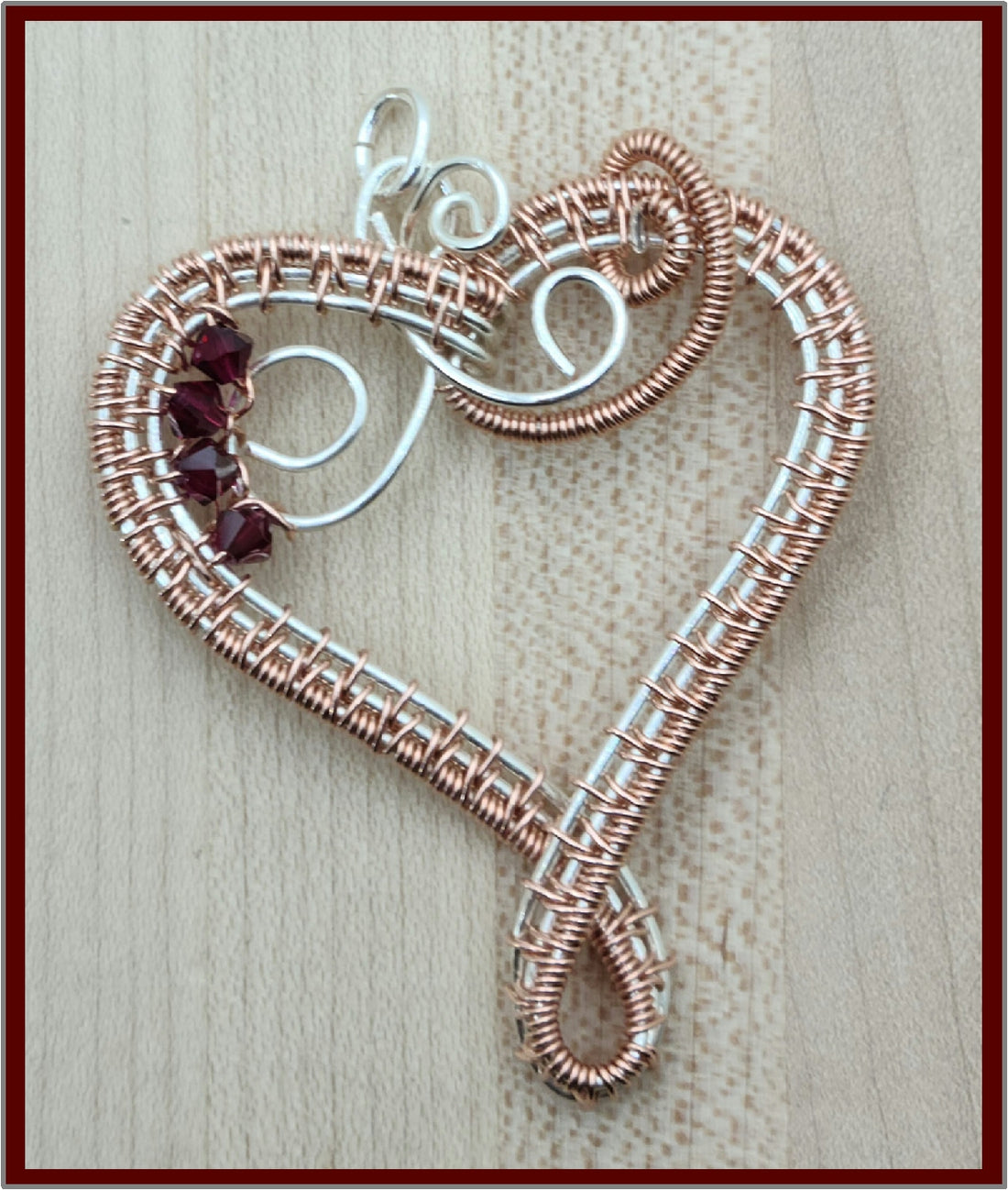
Adventures in Wire Weaving
Share

It's apple time again. Oh my, our trees were certainly prolific producers this year, yielding more than ever before! I've been processing apples for at least six weeks. Fortunately, the two trees ripen at different times! I've made applesauce, apple butter, slices frozen for pies, and rings dehydrated for snacking. The apple chips are our favorite so the dehydrator has been going practically non-stop. I also dug all of the onions and sweet potatoes, then put all of the garden to bed except the watermelons. There are five more of those out there that I THINK will ripen. They've been averaging 20 - 25 very sweet pounds each.
Okay, on to jewelry news.
I’ve become intrigued by a new (to me) jewelry technique called wire weaving. I love the myriad possible iterations of using it to create jewelry. After spending a good bit of time completing a plethora of practice pieces - now owned and worn by my family and close friends - the process is becoming second nature. So I’ve started offering woven wire pendants on my website. There’s very little possibility of any two being exactly the same. At the moment copper and silver plated copper are the wires of choice, even combined in a few pieces.
Wire weaving seems to have begun in ancient Egypt, been adopted by the Vikings, then branched into wire mesh and chain maille for armor in Europe. It went on to intricately decorative wrapping and weaving/bending as drawn metal (wire) became more abundant and refined.
Designs using wire weaving can be as simple or intricate as the imagination can visualize. It is done using copper, silver plated copper, sterling silver, fine silver, and even aluminum. Stones, pearls, and crystals can be incorporated in the pieces. It a bit hard on the hands, but oh so fun to do.
When discussing wire, it is generally referred to by its gauge. The larger the gauge’s number, the smaller the wire (go figure). Wire weaving’s larger ‘base’ wires are usually 18, 20, and maybe even 16 gauge for bracelets. The wire used for weaving the patterns onto the base wires is generally 26 or 28 gauge. All of it should be ‘dead soft,’ meaning it is very flexible and easy to bend. The process of shaping the wire will generally ‘work harden’ it enough to make it sturdy. Just so ya know, half hard wire is not easily shaped and hard wire is very difficult to curve.
Now to explain ‘work hardening.’ To strengthen a metal by plastic deformation is to work harden it. The strengthening occurs because, in layman’s terms, the material’s atoms slip over each other and rearrange (dislocate) themselves. Go too far with work hardening and you will actually create metal fatigue and breakage.
I hope that last bit wasn’t too technical. No worries, just click below to scoot on over to the Woven Wire Pendant collection page and have a look. Nothing technical about enjoying the pieces I’ve created! You might even see something you absolutely must have!

1 comment
Your jewelry is so original and I would love to see it in person sometime!❤️